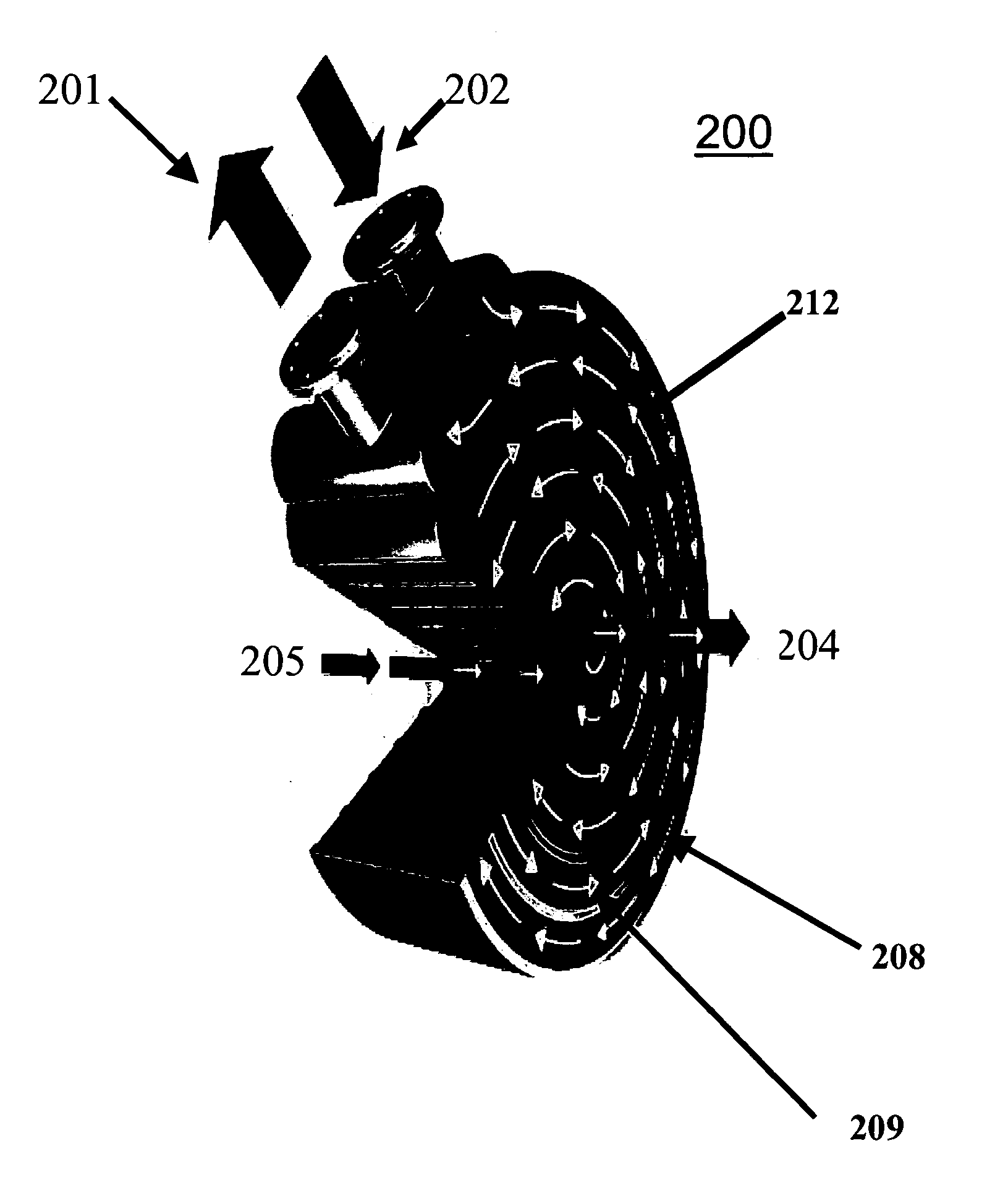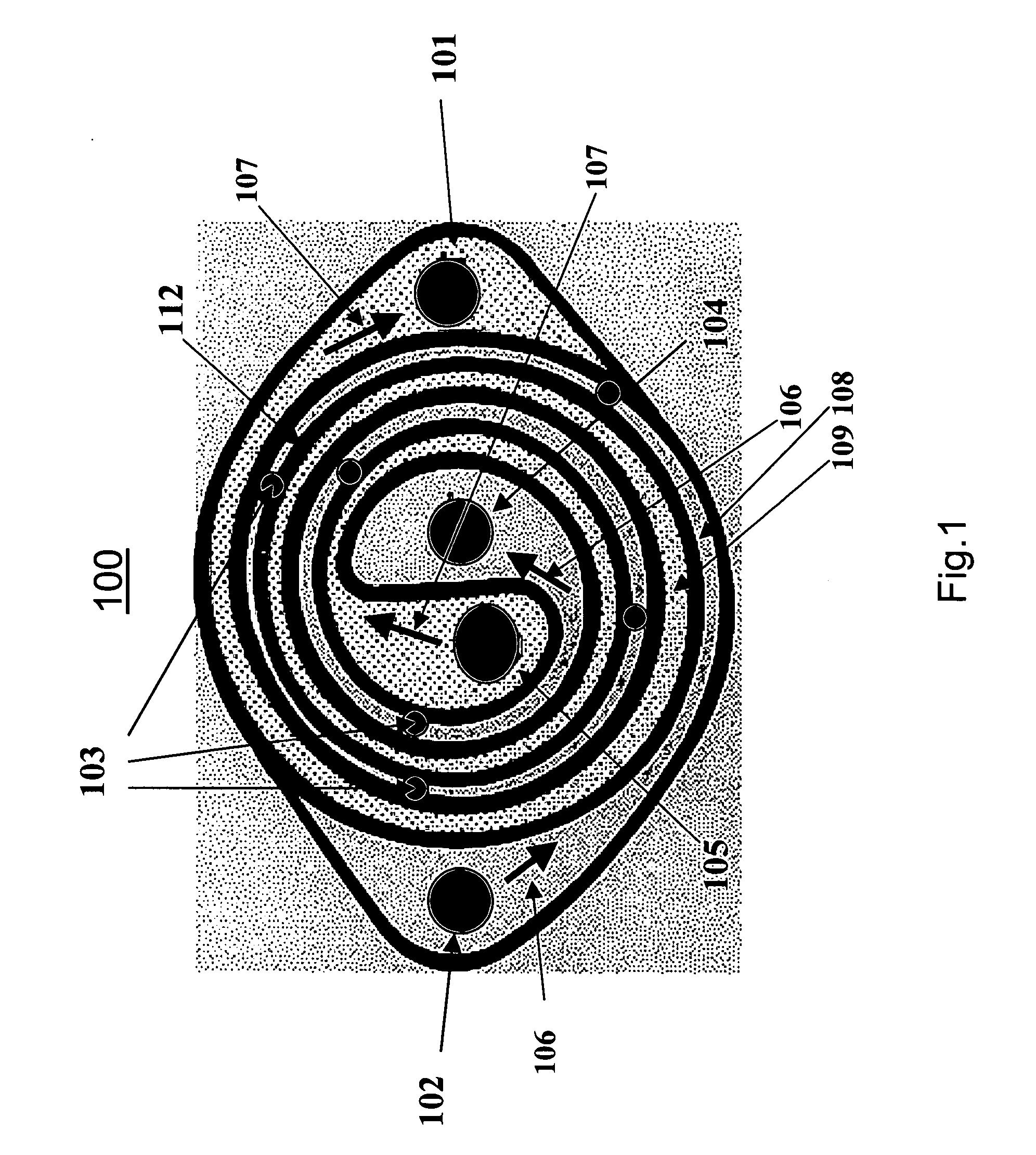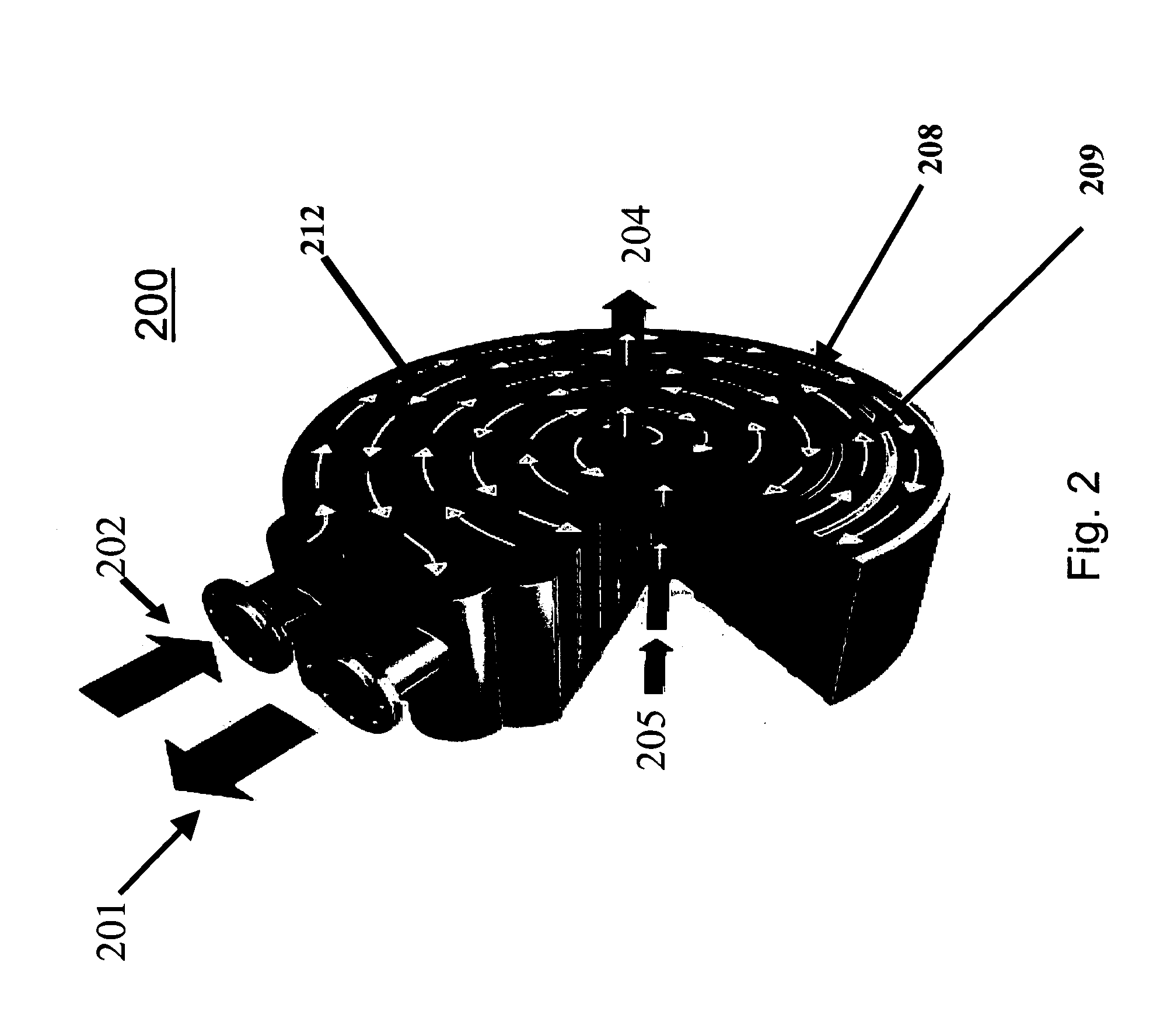Design of fuel cell and electrolyzer for small volume, low cost and high efficiency
a fuel cell and electrolyzer technology, applied in the field of electrochemical fuel cells, can solve the problems of slow acceptance of commercial applications, and limited fuel flow capacity, so as to improve the scalability of the cell, reduce the cost of operation, and improve the effect of scalability
- Summary
- Abstract
- Description
- Claims
- Application Information
AI Technical Summary
Benefits of technology
Problems solved by technology
Method used
Image
Examples
Embodiment Construction
[0024] Principles of my invention first presented in the above mentioned related provisional application (Application No. 60 / 786,088 filed on Mar. 27, 2006), the content of which is incorporated by reference herein in its entirety, can be understood by the following description in light of the figures of the drawings. Various schematic views depicting different aspects of the design are shown in FIGS. 1-4. The electrochemical fuel cell according to the principles of the invention combines a spiral structure of a heat exchanger and principles with electrochemical cells technology namely, generation of electrical energy by an electrochemical reaction. Identical elements in the figures are represented by same reference numerals.
[0025] An embodiment of the invention described here is by way of example and is not meant to be limiting. Turning our attention first to FIG. 3, there it shows a schematic view of a fuel cell 300 designed and constructed according to the principles of the inve...
PUM
| Property | Measurement | Unit |
|---|---|---|
| temperatures | aaaaa | aaaaa |
| size | aaaaa | aaaaa |
| electrically conducting | aaaaa | aaaaa |
Abstract
Description
Claims
Application Information
 Login to View More
Login to View More - R&D
- Intellectual Property
- Life Sciences
- Materials
- Tech Scout
- Unparalleled Data Quality
- Higher Quality Content
- 60% Fewer Hallucinations
Browse by: Latest US Patents, China's latest patents, Technical Efficacy Thesaurus, Application Domain, Technology Topic, Popular Technical Reports.
© 2025 PatSnap. All rights reserved.Legal|Privacy policy|Modern Slavery Act Transparency Statement|Sitemap|About US| Contact US: help@patsnap.com



